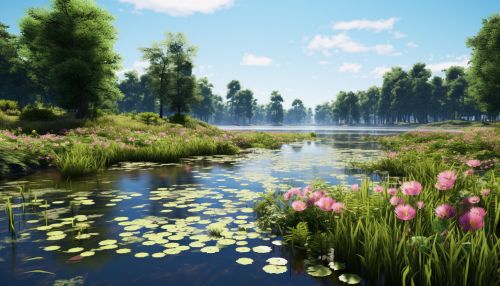The Ecology of Freshwater Wetlands and Their Functions
Introduction
Freshwater wetlands are complex and dynamic ecosystems that play a crucial role in the global water cycle, biodiversity conservation, and climate regulation. They are characterized by the presence of water, hydric soils, and hydrophytic vegetation. Freshwater wetlands include a variety of habitats such as marshes, swamps, bogs, fens, and riparian zones. These ecosystems provide numerous ecological services, including water purification, flood control, carbon sequestration, and wildlife habitat.


Types of Freshwater Wetlands
There are several types of freshwater wetlands, each with distinct characteristics and ecological functions.
Marshes
Marshes are wetlands that are continually flooded with water. They are characterized by emergent soft-stemmed vegetation adapted to saturated soil conditions. Marshes can be found in various climates, from the tropics to the tundra.
Swamps
Swamps are wetlands that are dominated by woody plants such as trees and shrubs. They can be found in many parts of the world and can be freshwater or saltwater.
Bogs
Bogs are freshwater wetlands characterized by spongy peat deposits, acidic waters, and a floor covered by a thick carpet of sphagnum moss. They often develop in areas where the water table is high.
Fens
Fens are peat-forming wetlands that receive nutrients from sources other than precipitation: usually from upslope sources through drainage from surrounding mineral soils and groundwater movement.
Riparian Zones
Riparian zones are the interfaces between land and rivers or streams. They are significant in ecology, environmental management, and civil engineering due to their role in soil conservation, their habitat biodiversity, and the influence they have on aquatic ecosystems.
Ecological Functions of Freshwater Wetlands
Freshwater wetlands perform a variety of ecological functions that are beneficial to humans and the environment.
Water Purification
One of the most important functions of freshwater wetlands is their ability to improve water quality. They act as natural filters, trapping sediments and pollutants such as heavy metals and pesticides, thereby preventing these contaminants from reaching groundwater or surface water bodies.
Flood Control
Wetlands act as natural sponges, absorbing and storing excess rainfall and reducing flood peaks. This function is particularly important in urban areas where impervious surfaces such as roads and buildings increase runoff and the risk of flooding.
Carbon Sequestration
Freshwater wetlands play a critical role in climate regulation by acting as carbon sinks. They sequester carbon dioxide from the atmosphere and store it in their plant biomass and soils, helping to mitigate climate change.
Wildlife Habitat
Freshwater wetlands provide habitat for a wide variety of wildlife, including many species of birds, mammals, reptiles, amphibians, fish, and invertebrates. Many of these species are specially adapted to the unique conditions of wetland environments.
Threats to Freshwater Wetlands
Despite their ecological importance, freshwater wetlands are under threat worldwide. The main threats include drainage for agriculture, urban development, pollution, invasive species, and climate change. These threats can lead to the loss or degradation of wetland habitats, with significant impacts on biodiversity and ecosystem services.
Conservation of Freshwater Wetlands
Efforts to conserve and restore freshwater wetlands are crucial for maintaining their ecological functions and the services they provide. Conservation strategies include the establishment of protected areas, restoration of degraded wetlands, sustainable land-use practices, and public education and awareness programs.
